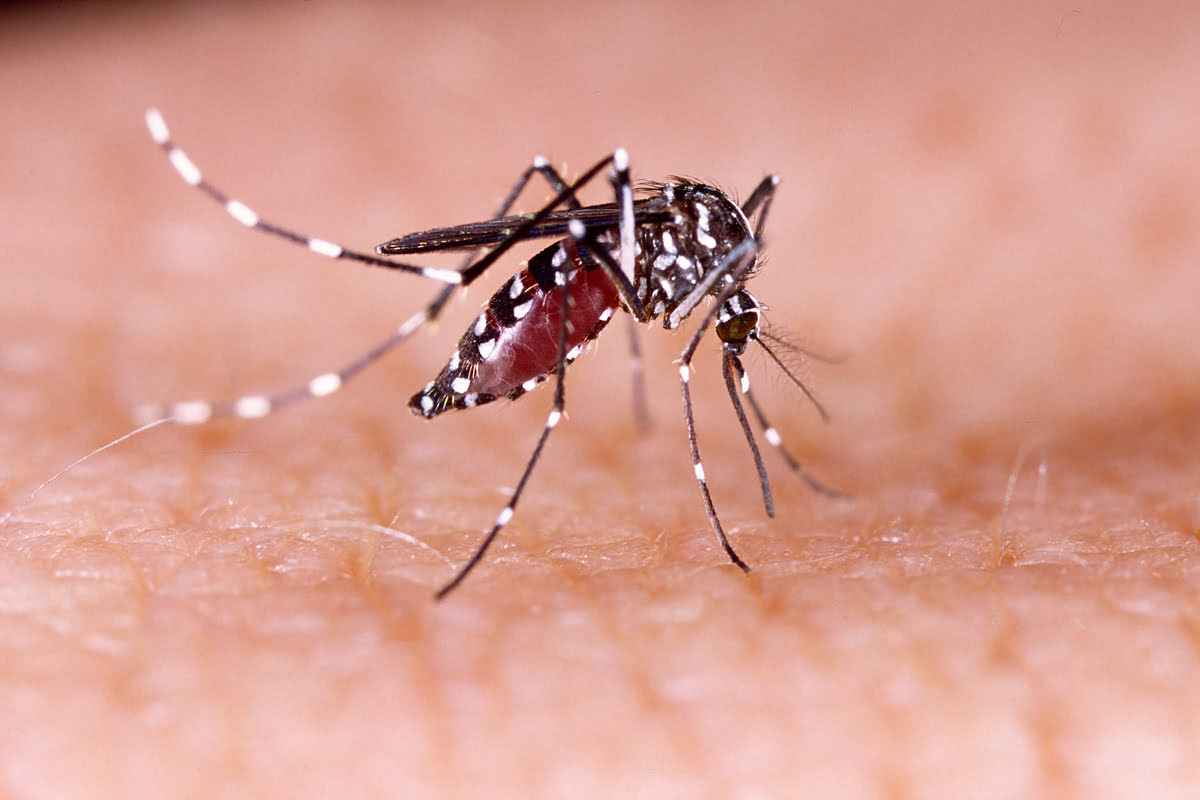Home>Gardening News and Trends>Latest News>How To Kill Insects With Dispenser


Latest News
How To Kill Insects With Dispenser
Modified: January 22, 2024
Learn the latest news on how to effectively kill insects with a dispenser. Find expert tips, tricks, and product recommendations to keep your home bug-free.
(Many of the links in this article redirect to a specific reviewed product. Your purchase of these products through affiliate links helps to generate commission for Chicagolandgardening.com, at no extra cost. Learn more)
Table of Contents
Introduction
Welcome to the world of insect control! Insects are a common nuisance that can invade our homes, gardens, and outdoor spaces. Whether it’s pesky mosquitoes buzzing around during summer evenings or ants marching across our kitchen countertops, dealing with these little invaders can be both frustrating and unhygienic. That’s where insect dispensers come in handy.
Insect dispensers are devices designed to effectively and safely eliminate insects from our surroundings. They work by emitting insecticides or repellents into the air, creating a barrier that keeps bugs at bay. These devices have gained popularity due to their convenience, affordability, and ability to control a wide range of insects.
In this article, we will explore the world of insect dispensers and guide you on choosing the right one for your needs. We will also provide tips on how to use them effectively, safely, and troubleshoot common issues. By the end of this article, you will have a good understanding of how insect dispensers work and be equipped with the knowledge to keep those bothersome bugs at bay.
So, let’s dive in and learn how to create a bug-free environment with the help of an insect dispenser!
Understanding the Importance of Insect Control
Insects play a significant role in our ecosystem, but when they invade our living spaces, they can become a nuisance and pose health risks. It’s important to understand the importance of insect control to safeguard our homes, protect our health, and maintain a clean and hygienic environment.
One of the key reasons for implementing insect control measures is to prevent the spread of diseases. Mosquitoes, for example, are known carriers of deadly diseases such as malaria, dengue fever, and Zika virus. By effectively controlling mosquito populations, we can reduce the risk of these diseases spreading and protect the well-being of ourselves and our loved ones.
Insects can also cause significant damage to our property. Termites, for instance, can wreak havoc on the structural integrity of our homes by feasting on wood and causing costly repairs. Ants, cockroaches, and silverfish can contaminate our food, damage electrical wiring, and create unhygienic living conditions. Implementing insect control measures can help mitigate these risks and protect our investments.
Furthermore, insect control is crucial for preserving our agricultural crops. Many insects, such as aphids and caterpillars, feed on crops, leading to reduced yields and financial losses for farmers. By effectively managing and controlling insect populations, we can ensure the availability of quality produce and food security.
Lastly, but certainly not least, insect control contributes to our overall peace of mind and quality of life. Living in a space free from buzzing mosquitoes, crawling ants, and pesky flies allows us to relax, sleep better, and enjoy outdoor activities without constantly swatting away pests. It creates a more welcoming and comfortable environment for ourselves, our families, and our guests.
By understanding the importance of insect control, we can take proactive measures to eliminate or minimize the presence of insects in our surroundings. In the following sections, we will explore how insect dispensers can play a crucial role in achieving effective insect control and creating a bug-free environment.
Choosing the Right Insect Dispenser
When it comes to selecting an insect dispenser, it’s important to consider several factors to ensure you choose the right one for your specific needs. Here are some key considerations to keep in mind:
- Type of Insects: Different insect dispensers are designed to target specific types of insects. Determine the main pests you want to control, such as mosquitoes, flies, or ants, and choose a dispenser that specifically targets those pests.
- Size of Area: Consider the size of the area you want to protect. Insect dispensers come in various sizes, so ensure that the dispenser you choose is suitable for the size of the space you want to treat. Larger areas may require multiple dispensers or a more powerful unit.
- Indoor or Outdoor Use: Determine whether you need an insect dispenser for indoor or outdoor use, or both. There are specific models designed for outdoor use that provide broader coverage and withstand outdoor conditions, while indoor models may have features like quiet operation.
- Power Source: Insect dispensers can be powered by electricity, batteries, or natural methods such as solar power. Consider the availability of power sources in your intended location and choose a dispenser that aligns with your preferences.
- Dispensing Method: There are different dispensing methods available, including aerosol sprays, liquid refills, or timed-release devices. Each method has its advantages and disadvantages, so choose one that suits your convenience and preferences.
- Safety Features: Ensure that the insect dispenser you choose has adequate safety features, such as child-proof locks or automatic shut-off mechanisms. Safety should always be a top priority, especially if you have children or pets in your home.
Additionally, it’s a good idea to read product reviews and compare different brands and models to assess their performance, reliability, and customer satisfaction. Consider consulting with pest control professionals or seeking recommendations from friends or online communities to make an informed decision.
By taking these factors into account, you can select an insect dispenser that effectively addresses your pest control needs, provides convenience, and ensures a bug-free environment.
Preparing for Insect Control
Before utilizing your insect dispenser, it is essential to adequately prepare the area for effective insect control. Taking the time to prepare will ensure that you maximize the efficiency of the dispenser and achieve optimal results. Here are some important steps to follow:
- Clean the Area: Start by cleaning the area where you plan to use the insect dispenser. Remove any clutter, food debris, and standing water, as these can attract insects and interfere with the dispenser’s effectiveness.
- Identify Problematic Areas: Take note of specific areas where insects tend to congregate or enter your space. Common problem areas include windows, doorways, cracks in walls, or areas prone to dampness. By identifying these areas, you can strategically position the dispenser to target them effectively.
- Ensure Proper Ventilation: Insect dispensers often require good air circulation to effectively distribute the insecticide or repellent. Ensure that there is adequate airflow in the space by opening windows or using fans, if possible. This will help disperse the product and increase its coverage.
- Read and Follow Instructions: Carefully read the instructions provided by the manufacturer of the insect dispenser. Familiarize yourself with the recommended usage guidelines, safety precautions, and any specific requirements for preparation or placement.
- Protect Sensitive Materials: If you have sensitive materials or surfaces in the area, such as fabrics or electronics, cover them or move them away from the vicinity of the dispenser. Some insecticides or repellents may have adverse effects on certain materials, so it’s important to safeguard them.
- Keep Children and Pets Away: During the preparation process and while the insect dispenser is in use, it is crucial to keep children and pets away from the treated area. Insecticides or repellents can be harmful if ingested or come into contact with the eyes or skin.
Following these preparation steps will help create an optimal environment for insect control. By ensuring cleanliness, identifying problem areas, promoting ventilation, and taking necessary precautions, you can enhance the effectiveness of your insect dispenser and minimize the presence of unwanted insects in your space.
Using the Insect Dispenser
Using an insect dispenser is a relatively straightforward process, but it’s important to follow the manufacturer’s instructions for optimal results. Here are the general steps to effectively utilize an insect dispenser:
- Position the Dispenser: Place the insect dispenser in a strategic location, considering the areas where insects are most active or likely to enter. This could be near windows, entrances, or areas where you have noticed signs of infestation.
- Load or Install the Product: Follow the instructions to load or install the appropriate insecticide or repellent product into the dispenser. This may involve inserting aerosol cans, filling liquid reservoirs, or attaching timed-release cartridges.
- Set the Dispenser: Depending on the type of dispenser you have, adjust the settings or timers to control the frequency and duration of insecticide or repellent release. It’s recommended to start with the manufacturer’s recommended settings and make adjustments based on the effectiveness and desired coverage.
- Activate the Dispenser: Activate the dispenser according to the instructions. This may involve turning on the power, setting a timer, or pressing a button to initiate the release of the product. Ensure that the dispenser is operating correctly and that the product is being dispensed as intended.
- Monitor and Refill: Regularly monitor the dispenser to ensure that it is working properly and that the product is not running low. Some dispensers may have indicator lights or alarms to alert you when it’s time to refill or replace the product.
- Observe Results: Over time, observe the impact of the insect dispenser on the insect population in your space. Pay attention to any noticeable reduction in activity, decreased sightings of insects, or a decrease in bites or irritations. Keep in mind that it may take some time for the full effects of the dispenser to be evident.
Remember to always follow the safety instructions provided by the manufacturer, and be sure to keep children and pets away from the dispenser during operation. If you have any concerns or questions, don’t hesitate to reach out to the manufacturer or consult with a pest control professional for guidance.
By using the insect dispenser properly and consistently, you can enjoy the benefits of a bug-free environment and effectively control the presence of unwanted insects in your space.
Safety Precautions
While insect dispensers are effective tools for insect control, it’s important to prioritize safety when using them. By following these safety precautions, you can ensure the well-being of yourself, your family, and your pets:
- Read and Follow Instructions: Carefully read and understand the manufacturer’s instructions before using the insect dispenser. Adhere to the recommended usage guidelines, including proper placement, duration of operation, and product use.
- Keep Out of Reach of Children and Pets: Place the insect dispenser in an area inaccessible to children and pets. Insecticides or repellents can be harmful if ingested or come into contact with the eyes or skin. Always store any unused insecticides or refill products out of reach.
- Avoid Direct Inhalation: Do not inhale the insecticide or repellent directly. If using an aerosol spray dispenser, position the dispenser away from your face and avoid breathing in the spray. Ensure adequate ventilation in the area to minimize exposure to the product.
- Protective Clothing: When handling and installing refill products, consider wearing protective clothing, such as gloves or long sleeves, to prevent contact with the skin. If any product comes into contact with your skin, wash thoroughly with soap and water.
- Avoid Contamination of Food and Surfaces: Take care to prevent the insecticides or repellents from coming into contact with food, food preparation surfaces, or kitchen utensils. Clean any surfaces that may have been exposed to the product before use.
- Proper Disposal of Used Products: Dispose of used aerosol cans or empty refill containers in accordance with local waste disposal guidelines. This ensures the safe handling and disposal of any potentially harmful chemicals.
- Follow Precautions for Outdoor Use: If using the insect dispenser outdoors, be mindful of potential environmental impact. Avoid spraying near bodies of water, such as ponds or streams, to prevent contamination. Opt for eco-friendly insecticides or repellents if available.
By taking these safety precautions, you can use your insect dispenser responsibly and minimize any potential risks associated with the use of insecticides or repellents. If you have specific concerns about the safety of a particular product, consult with the manufacturer or seek advice from a pest control professional.
Troubleshooting Common Issues
While insect dispensers are designed to be effective and reliable, there may be instances where you encounter common issues. Here are some troubleshooting tips to help address and resolve them:
- Ineffective Insect Control: If you notice little to no reduction in the insect population, check that the dispenser is positioned correctly and in the most strategic location. Ensure that the product being used is appropriate for the specific type of insects you are targeting. If necessary, adjust the settings or increase the frequency of product release.
- Uneven Coverage: In some cases, you may observe that certain areas receive inadequate coverage while others are excessively treated. To address this issue, try repositioning the dispenser to achieve better distribution of the insecticide or repellent. Adjust the settings to ensure an even release of the product throughout the desired area.
- Dispenser Malfunction: If your insect dispenser stops working, check that it is properly connected to a power source or that the batteries are charged. Inspect the dispenser for any clogs or blockages that may be inhibiting the flow of the product. Consult the manufacturer’s troubleshooting guide or contact customer support for assistance.
- Unpleasant Odor: Some insecticides or repellents may emit a strong or unpleasant odor that lingers in the air. If this occurs, consider using alternative products with milder scents or opt for natural repellents. Ensure proper ventilation in the treated area to help dissipate any odors.
- Allergic Reactions or Irritation: If you or anyone in your household experiences allergic reactions or skin irritation after using the insect dispenser, discontinue use immediately. Consult a healthcare professional if symptoms persist or worsen. Consider switching to alternative products that are labeled as hypoallergenic or specifically suited for sensitive individuals.
- Product Expired or Ineffective: Check the expiration date of the insecticides or repellents being used. Expired products may be less effective or not work at all. Replace any expired products with fresh ones to ensure optimal results.
If you are unable to resolve any issues or find that the insect dispenser continues to malfunction, it may be necessary to consult with the manufacturer or seek advice from a pest control professional. They can provide further guidance and assistance in troubleshooting and resolving any persistent problems.
Remember, each dispenser and product may have specific troubleshooting steps, so always refer to the manufacturer’s instructions and guidelines for best results.
Maintenance and Cleaning
Maintaining and cleaning your insect dispenser is crucial to ensuring its longevity and optimal performance. Regular maintenance helps prevent clogs, extends the lifespan of the device, and ensures that it continues to effectively control insects. Here are some important maintenance and cleaning tips:
- Refer to the Manufacturer’s Instructions: Read the manufacturer’s instructions for specific maintenance guidelines and recommendations for your insect dispenser model. Follow any provided maintenance schedules or requirements.
- Regularly Inspect for Clogs: Check the dispenser for any potential clogs or blockages that could obstruct the proper flow of the product. Clear any debris or residue from the dispenser, ensuring it is clean and free from obstructions.
- Clean Exterior Surfaces: Wipe down the exterior surfaces of the dispenser regularly with a soft cloth or sponge. Use mild soap and water to remove any dirt, dust, or residue that may have accumulated. Avoid using abrasive cleaners or chemicals that could damage the device.
- Replace or Refill Products: Monitor the product level in your dispenser and replace or refill it according to the manufacturer’s recommendations. Using empty or expired products can render the dispenser ineffective.
- Check Batteries or Power Supply: If your dispenser is battery-operated or requires a power supply, regularly check the batteries or power connection to ensure they are working properly. Replace batteries as needed, or address any power supply issues promptly.
- Adjust Settings as Needed: Assess the effectiveness of the dispenser over time and make any necessary adjustments to the settings or timers. This might include modifying the release frequency or duration to achieve better insect control.
- Schedule Professional Servicing: Consider scheduling periodic professional servicing or maintenance to ensure the device is functioning optimally. Pest control professionals can inspect and service your dispenser, providing expert advice and necessary repairs.
Regular maintenance and cleaning will help prolong the lifespan of your insect dispenser and ensure its continued effectiveness. By following these maintenance practices, you can enjoy the benefits of an efficiently functioning device and effective insect control.
Conclusion
Insect control is an essential aspect of maintaining a clean, hygienic, and pest-free environment. Utilizing an insect dispenser can be a highly effective and convenient method for keeping pests at bay. By choosing the right dispenser, preparing the area, and using it correctly, you can significantly reduce insect populations and enjoy a more comfortable living space.
Understanding the importance of insect control allows us to appreciate the role that insect dispensers play in safeguarding our homes, protecting our health, and preserving our environment. Whether it’s preventing the spread of diseases, minimizing property damage, or ensuring food security, insect control is a vital aspect of our well-being.
By following the safety precautions, troubleshooting common issues, and regularly maintaining and cleaning your insect dispenser, you can maximize its effectiveness and prolong its lifespan. These practices will help ensure that your dispenser continues to provide reliable insect control for years to come.
Remember, when selecting an insect dispenser, consider the type of insects you want to target, the size of the area, and the dispensing method. Read and follow the manufacturer’s instructions carefully to achieve the best results.
Creating a bug-free environment is possible with the right knowledge and proper use of insect dispensers. By taking the necessary steps to control insects, you can enjoy a peaceful and pest-free living space for you, your family, and your loved ones.







